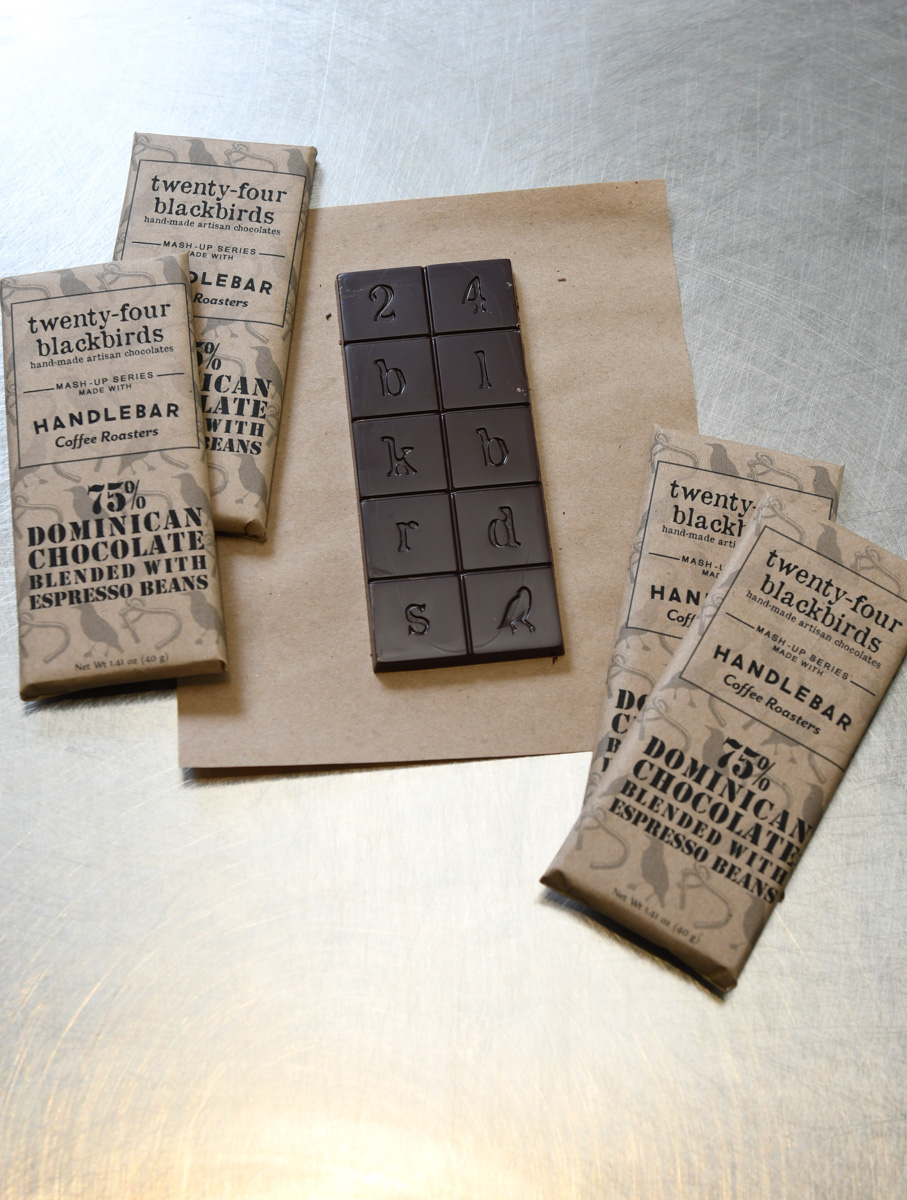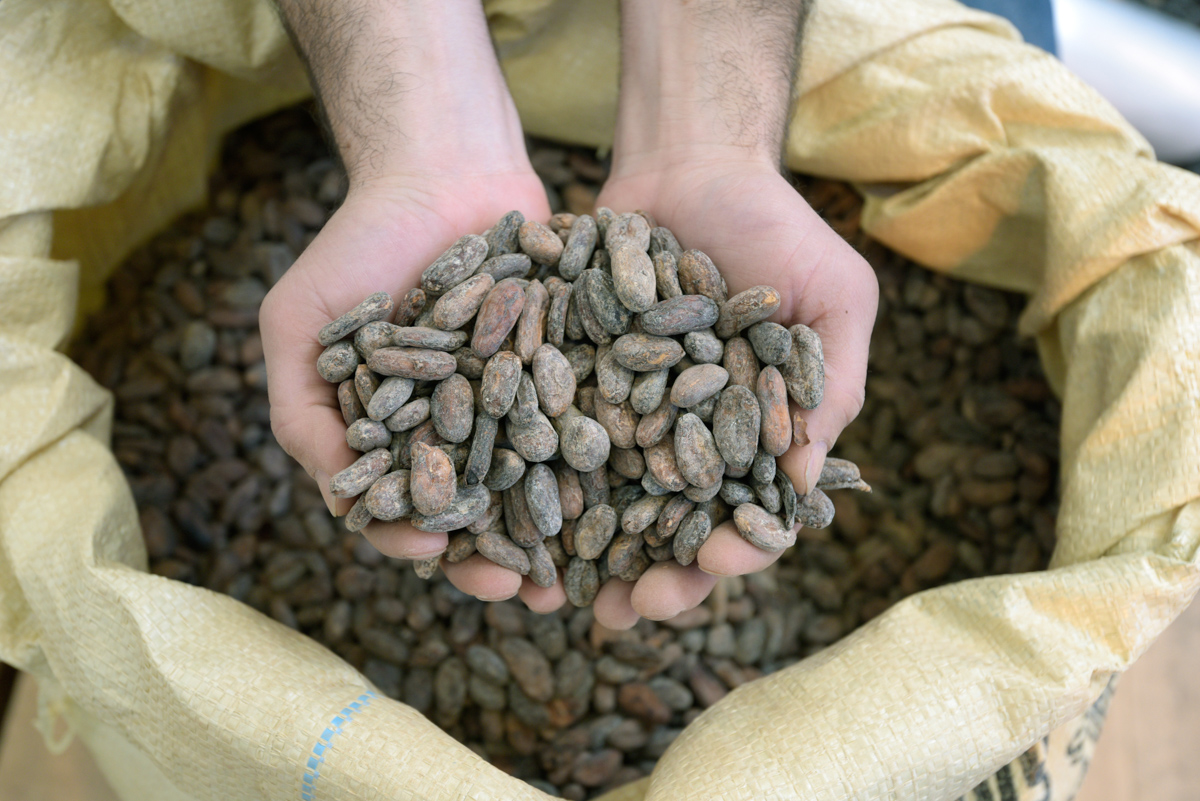
You don’t need a golden ticket to enter Santa Barbara’s chocolate factory, nor will you encounter orange-skinned creatures, navigable rivers of chocolate, or gravity-defying beverages inside. But if you do walk through the doors of Twenty-Four Blackbirds Chocolate on East Haley Street, you’ll smell the warm aroma of roasting cocoa in the air and find delicious treats to plop in your mouth, curious machinery to entertain your eyes, and, like the fictional Willy Wonka, a mad scientist of sweets.
That’s owner Mike Orlando, a risk-taking entrepreneur and problem-solving inventor whose work is changing the world of craft chocolate. “We were one of the first to do it,” said Orlando of his entry into America’s craft chocolate movement in 2010. “We lucked into the timing of craft chocolate. Eight years later, there must be more than 200 bean-to-bar companies in the United States alone.”
When Twenty-Four Blackbirds began, only about 10 other American producers were making chocolate bars out of fermented cocoa beans that they sourced directly from cacao farmers in the tropics. This hands-on, single-origin, “bean-to-bar” process is much different than the industrialized, corporate-controlled chocolate industry, which has ruled the planet since the 1800s and treats cocoa as a gross commodity like wheat rather than a customized product like wine.
Much like craft brewers and boutique coffee roasters, chocolate makers — distinct from chocolatiers, who take finished chocolate and make candies — continue to launch new brands throughout the country. Unlike beer and coffee, which are starting to show signs of contraction, the cocoa trend currently shows no signs of abating.
There remains plenty of room for growth, so existing producers are collaborating more than competing, encouraging anyone with the right grinder and gumption to take the leap. Meanwhile, “Big Chocolate” would-be boogeymen — corporations like Hershey and Nestlé and Mars — aren’t messing with the little guys yet, as the craft movement amounts to less than one percent of the global cocoa market.
And yet, since many American bean-to-bar makers are focused on fostering fair trade, supporting sustainability, and even reviving heirloom varieties of cacao, the social impacts of this small movement feel quite big. That’s a positive shift from chocolate’s postcolonial history, in which millions of farmers from West Africa to South America — including a rampant amount of child labor — still subsist in near-slavery conditions due to the volatile commodity market.
“As more companies come on, more information is being shared and more farms are being discovered by people who care,” said Orlando. “I think we have 5-10 more years of this before it becomes the Hershey-versus-Nestlé battle and we’re competing for the same space. And that time may never come.”
Welcome to the golden age of American craft chocolate.
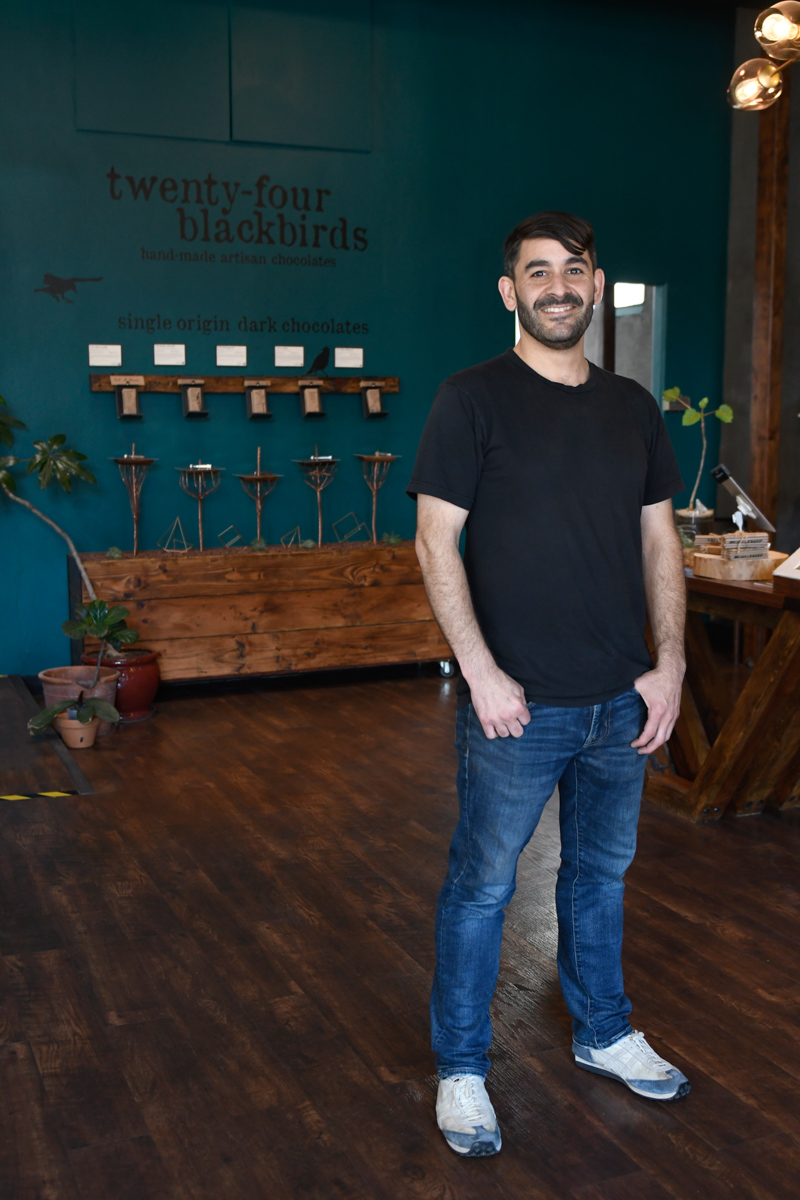
Blackbird Fly
Since starting in a tiny, shared commercial kitchen on East Yanonali Street — with initial sales through The French Press coffee shop — Twenty-Four Blackbirds steadily skyrocketed in growth, nearly doubling in sales every year for a while. Today, Orlando sells his bars through nearly 400 retailers in the United States, with another 100 in Tokyo.
“When we started, we used to process one bag of cocoa beans at a time,” said Orlando, who founded the company with his then-girlfriend, Elaine Madsen. “Now we buy a ton of cacao per order. It’s many factors larger.”
After four years in a slightly larger kitchen on De la Vina Street, Orlando moved operations to East Haley Street in 2016 and has been renovating the 3,000-square-foot space ever since. (He and Madsen parted ways a while back, and she’s now a designer at this newspaper.) Today, the low-slung warehouse — which was originally a glassmaking facility but spent nearly two decades as the Taka-Puna bespoke clothing store — is a full-on chocolate factory, with refiners, roasters, winnowers, and the tempering machine humming at every waking hour.
The results are shiny bars that snap and don’t melt right when you touch them, but do when you put them in your mouth. Explained Orlando, “All of these characteristics are what make chocolate chocolate for most people.”
What sets Orlando apart is that he also designs machines to help himself and others tackle recurrent problems, enhance efficiency, and just make better chocolate. “Because I am making chocolate every single day, it’s easy for me to come up with a machine that solves a problem,” said Orlando, who previously worked as a marine biologist and analytical chemist for UCSB and UC Santa Cruz. Based in the rear of the factory, his technology development company is called Prefix Equipment Manufacturing, and it has sold plans, prototypes, and finished products to chocolate makers in Los Angeles, San Francisco, and across the United States.
Most important, both for his business and the public, the new Twenty-Four Blackbirds headquarters is a retail front and educational hub. People can taste the difference between single-origin chocolates from Madagascar, Ecuador, Tanzania, Bolivia, and the Dominican Republic; sample some of his wildly flavored confections (spicy togarashi, pink peppercorn & licorice salt caramel, etc.); and learn tons about chocolate. Starting this week, visitors can take a self-guided tour through the facility, from the humid greenhouse, where fledgling cacao trees are growing, through the sorting and mixing rooms, and then to where the melted beans become packaged bars. (See sidebar on page 25 for the stages of chocolate making.)
“When I started, I didn’t want anything to do with retail, but I realized that I had to do it, because we were going to get left behind in terms of business growth,” said Orlando, who employs seven people. “Now that this is open, it’s time to catch up.”
And to do retail, you really need to do education in order for people to understand why they’re spending $7.50 on a chocolate bar, when Hershey sells the same thing for less than $2. That’s why, he explained, “this whole place was set up so that you could do the factory tour.”
Since opening in February, business has been consistent, but Orlando is very excited to launch the self-guided tours. “People are going to be pretty blown away, especially to see the tropical nursery,” said Orlando. “With that going, I am able to show the entire tree-to-bar process. That’s pretty unique. I don’t think anyone in the U.S. is doing anything like this.”
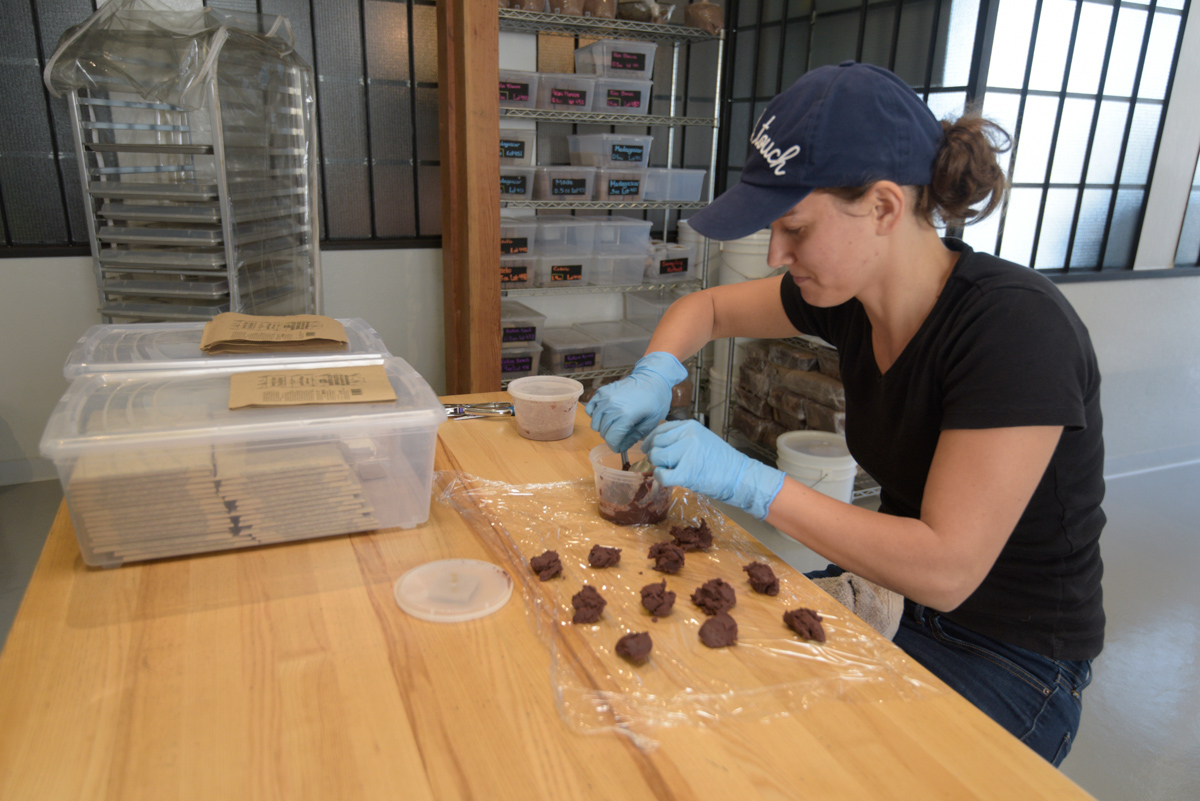
Maya Motivation
It’s unlikely Orlando would ever have started down this path if it weren’t for an even earlier chocolate entrepreneur in Santa Barbara: Maya Schoop-Rutten, the Swiss émigré who came to Santa Barbara in 1982, ran the Comeback Café on State Street for 16 years, and then opened her Chocolate Maya shop in 2007.
In her native Switzerland, as in much of Europe, there are chocolate shops on every block, but there was nothing like that in Santa Barbara. “I used to bring back bars from Switzerland,” she said of her earliest offerings. “Little by little, we got more bars from the United States, and they were actually better than the chocolate from Europe.”
Already into coffee roasting as a hobby, Orlando wandered into the new shop and bought one of the original American bean-to-bar, single-origin chocolates: the 70 percent Madagascar bar by Patric. “It was outrageously good,” recalled Orlando, so he started making his own in a rudimentary way and sharing the results. “The positive reinforcement of making chocolate for your friends is a biofeedback loop that doesn’t quit.” Twenty-Four Blackbirds was born soon after.
Decorated in moody, vivid colors with photos of cacao trees, fermenting beans, smiling farmers, and more, Chocolate Maya — which is adjacent to the coffee-bean bags of S.B. Roasting Company at State and Gutierrez streets — is reminiscent of a hip Central American café. In addition to the house-made truffles and wall full of sustainably sourced bars for sale, Schoop-Rutten also offers tasting flights that show how Madagascar chocolates can be bright and citrusy while those from the Solomon Islands may be much nuttier.
“Like wine, those other flavors are so important, and they should travel for a few minutes,” she said. “If you have a chocolate and the flavor is gone after you swallow it, that’s bad chocolate.” Also like wine, there is vintage variation. “We may get it from the same plantation, but it won’t ever taste that way again,” she said.
Her most expensive bar costs $22, but they are all more pricey than what you’ll find at the grocery store. “They’re very expensive because they come from places where farmers are making a profit,” said Schoop-Rutten. On numerous tours through cacao-growing regions, she’s seen how much of an impact America’s fair-trade-minded bean-to-bar producers can have for these family farmers, as many can now afford to send their kids to school or buy refrigerators. “It’s really wonderful that farmers are making more money now,” she said.
She also does her part to educate the farmers, like on a recent trip to Java. “They’ve never seen the end product, and they don’t know what chocolate looks like or tastes like,” said Schoop-Rutten, who always travels with bars now. “It’s kind of sad, isn’t it?”
While her business wouldn’t survive just on selling those bars alone, Schoop-Rutten explained, “They are crucial for me because of the education aspect of the business.” The number of producers sending samples continues to grow exponentially, but she remains “severe” in her assessment, noting that, while there are a lot more producers now, there are still not many that are “good, good, good.” (Twenty-Four Blackbirds made the cut from the get-go.)
With time, she believes that the quality producers will rise above the rest. “Kind of like the beer market: The bad ones will go and the good ones will stay, and it will all mellow out,” she said. “Right now, we’re in the prime boom. It’s exploding. Everyone is doing it. I can’t keep up.”
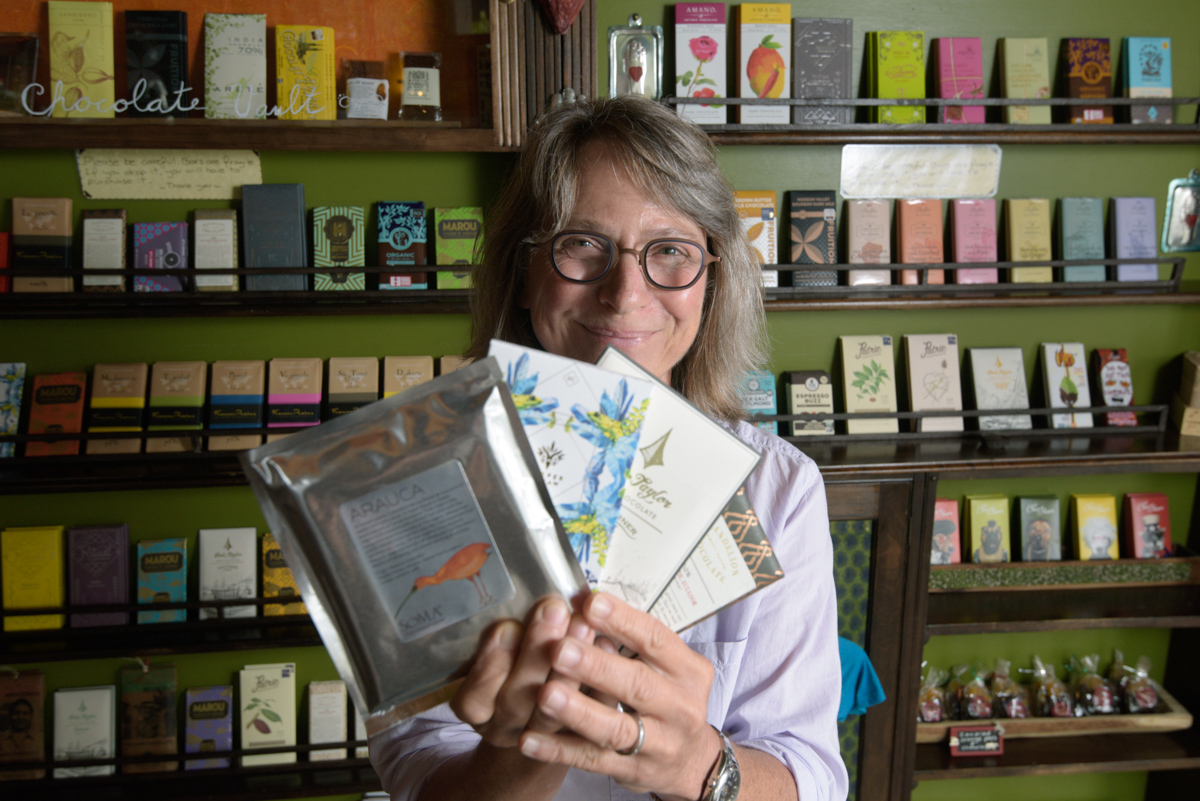
Aztec to America
America’s craft chocolate movement is a throwback of sorts to how chocolate was treated millennia ago by the indigenous peoples of Mexico. The Maya, Olmec, and Aztec all highly revered the cacao tree and cocoa beans, incorporating chocolate into important rituals and even using the beans as currency.
When the Spaniards arrived, they took to chocolate as well. It was mostly served as a beverage back then, and the Spaniards liked to cut its bitter flavor with sugar or honey. That quickly caught on in Europe, so the Spaniards, Dutch, French, and English started planting cacao trees throughout their colonies in the tropics, from Africa to South America to New Guinea, as the trees can only grow within about 20 degrees of the equator. Today, West Africa, particularly the Ivory Coast and Ghana, grows the majority of cocoa beans on the planet, more than half of global production at last count.
In 1879, after decades of development by such names as Nestlé and Cadbury, the Swiss chocolate maker Rodolphe Lindt invented the conching machine, which produced the texture and taste of chocolate that we know today. By the early 20th century, cocoa was being traded as a commodity like wheat, cotton, and rice. That’s how it’s treated today, with about 4.6 million tons per year amounting to more than $11 billion annually, depending on the market price.
The American craft chocolate movement, meanwhile, is just a tiny slice of that global figure, but it’s been growing steadily since 2007. Cultural trends of such magnitude are usually hard to pin to one person, but this movement does come down to Steve DeVries, a glassworker from Colorado who stumbled into the trade while learning Spanish in Costa Rica in 1998.
(Scharffen Berger — which started in San Francisco in 1996, coined the phrase “bean-to-bar,” and sold to Hershey for about $50 million in 2005 — is often called a pioneer as well. But the insider rub is that the company started out with a corporate rather than boutique model.)
“People try to call me the godfather, but I don’t have a little pinkie ring, so I don’t know about that,” said DeVries, who managed to track down some Costa Rican beans, bring them back to Denver, and make his first batch of chocolate using his oven and grain mill, based on the very few pieces of published information he could find. “It was admittedly crude, but it had a complexity of flavors that I had never tasted in chocolate before,” said DeVries. “That hooked me.”
He sold his first DeVries Chocolate bars in 2005. “I was the 12th-largest manufacturer in the United States,” he explained, “and also the smallest.” He had to crack the chocolate code — “It’s always been very secretive,” he said of the corporate experts — and started to confront the industry-pumped propaganda that the chocolate making starts in the factory, not the farm.
“Over the years, I’ve come to realize that, when the bean gets into the factory, 80 percent of what the chocolate can be is already determined,” he explained. “You can go up from there or down from there, but you can’t make a silk purse out of a sow’s ear.” (He much prefers the Spanish version of that cliché, aunque la mona se vista de seda mona se queda, which means that you can dress a monkey in silk, but it’s still a monkey.)
DeVries quickly learned why mass-produced chocolate was boring by design. “They want a standard. They want you to grab a Cadbury and have the same flavor from year to year,” said DeVries, explaining that many of the big companies don’t even process their own beans anymore, instead buying “chocolate liquor” from specialty “grinder” factories. “The only way you can do that is working with the lowest common denominator, so that’s why 95 percent of their bulk beans come from Africa, with no complexity of flavor,” he continued. “And then they blend four or five different beans and change their roast to come up with a fairly similar product.”
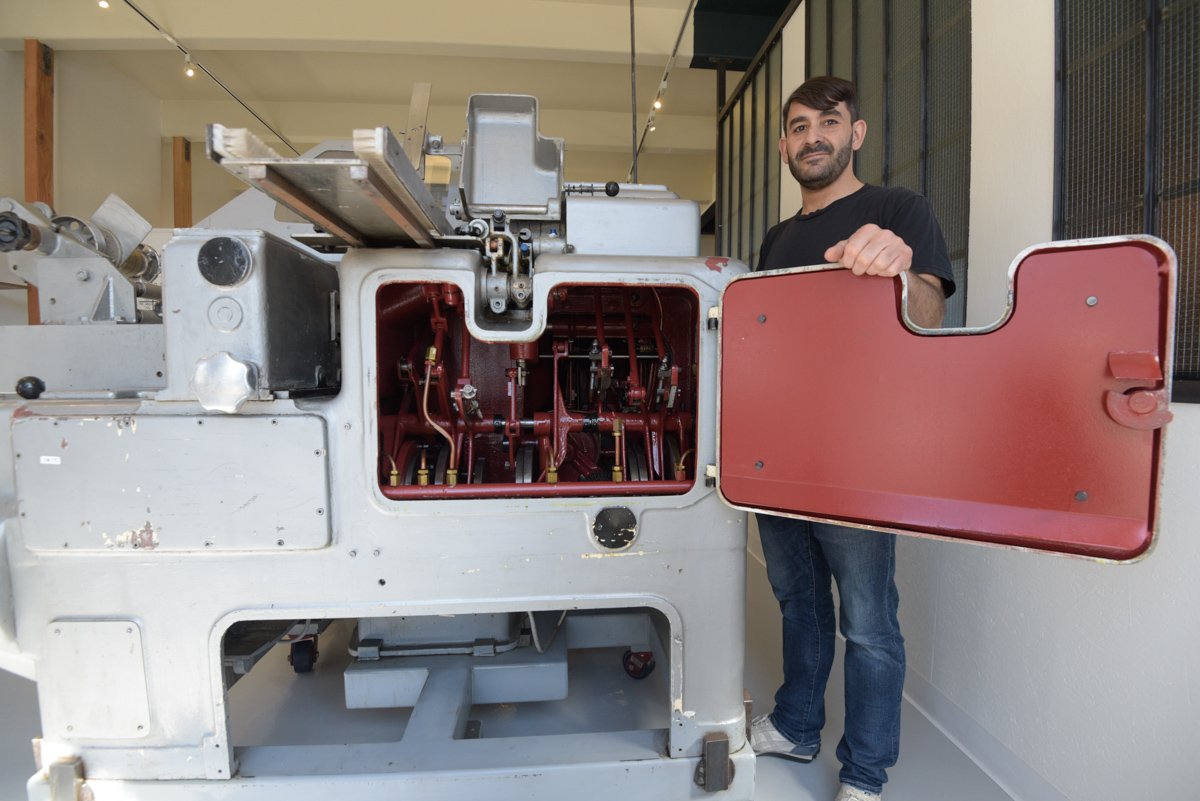
Surfing the Second Wave
Steve DeVries ran his company for 10 years, until health problems and rising rents caused him to shut down in 2015 and focus on consulting. By then, the movement was in full swing, starting with a first wave of producers that popped up around 2006 or so, including Amano in Utah, Patric in Missouri, Theo in Seattle, and Mast Brothers in Brooklyn.
Twenty-Four Blackbirds was part of the second wave when opening in 2010, as was San Francisco’s Dandelion Chocolate, according to Greg D’Alesandre, the latter company’s sourcing expert and VP of R&D. Like Twenty-Four Blackbirds, Dandelion is doubling down on their retail operations, both to increase margins and educate the consumer. They have two locations in S.F. and four in Japan.
“When you look at chocolate bars on a shelf, it’s hard to understand why one is $10 and one is $5,” said D’Alesandre, who said that consumers have become much smarter in recent years — many know the difference between making chocolate and making confections, for instance — yet there’s plenty of teaching to do. “When you have your own location, it’s a lot easier to tell that story to people.”
A former Google employee who joked for years that he’d eventually quit to make chocolate, D’Alesandre was also one of Mike Orlando’s first machine customers, specifically on a device that was able to break different-sized beans more efficiently. “Mike was absolutely the person who helped bring this machine to life,” said D’Alesandre, who appreciates that Orlando is taking a step back to rethink many parts of this century-old process from step one, not just improving existing technologies. “Before that, we were scratching our heads as to what we were going to do next.”
There is plenty of room for innovation at this level, said D’Alesandre, as the big chocolate companies, which process more than 100 tons a day, have never really focused on technology for smaller producers. “We need different equipment because we’re trying to accomplish a different goal,” he said.
Orlando also helped David Menkes, a former visual-effects artist and chocolate blogger in Los Angeles. After a visit to Twenty-Four Blackbirds for his Little Brown Squares blog, Menkes was inspired to start his own company, called LetterPress Chocolate, in 2014. Based near Culver City, it remains the only bean-to-bar producer in all of Los Angeles, and he serves as a guinea pig of sorts for Orlando’s inventions, particularly his winnowing system.
“That was a huge game changer for us,” said Menkes, who started with a shop vac and paint bucket, only able to make about a pound an hour. “Now we can do 100 pounds an hour.”
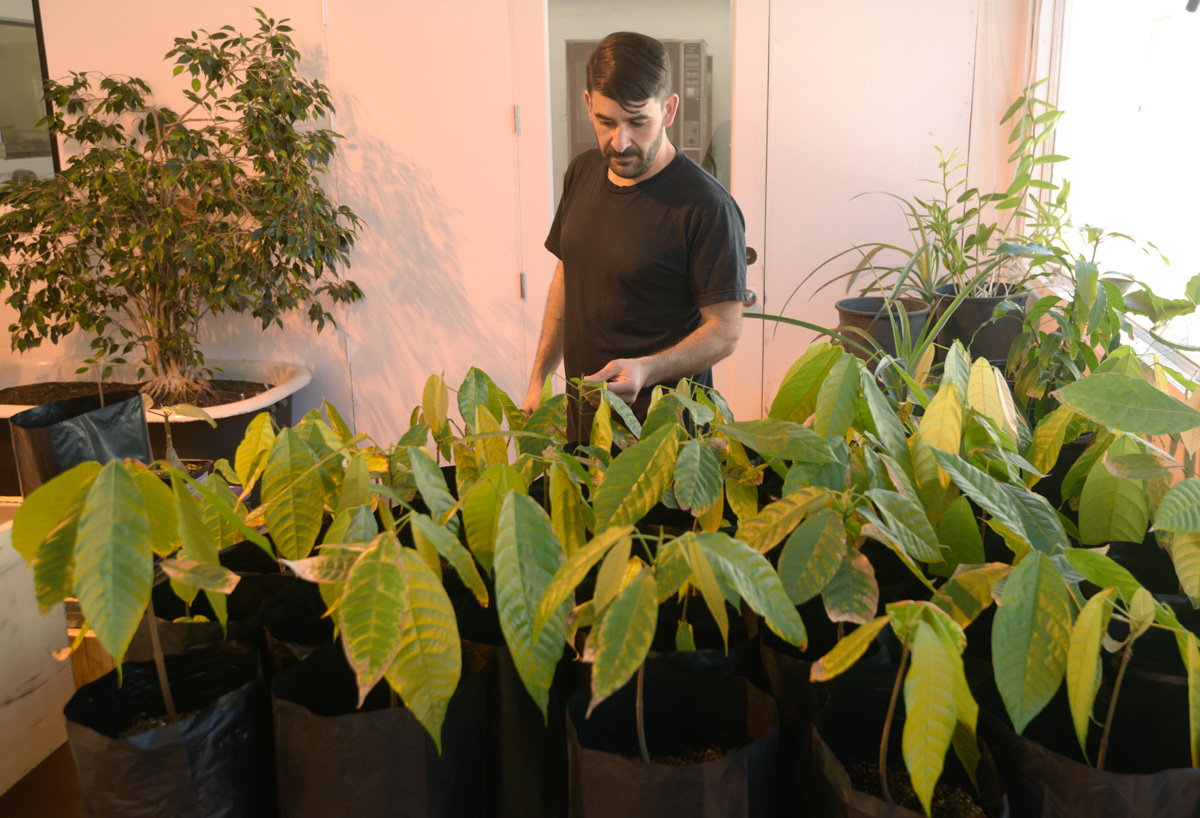
Not All Kisses and Smiles
No matter how good that fair-trade bar tastes or how much you’re willing to pay for it, the chocolate industry remains fraught with major issues. Much of that hinges on the vast economic disparity that exists between the developing world, which grows all of the chocolate, and the developed nations that eat almost all of it.
As Big Chocolate fights over slim margins, the cocoa-bean commodity market stays extremely volatile, forcing farmers to eke out an existence from harvest to harvest, often with children as labor. Add to that problems with fungus, environmental pressure caused by climate change, and the occasional political upheaval, and you won’t find too many folks volunteering to run a cacao plantation. It’s a tough life.
So America’s bean-to-bar makers focus on what they can change. “For me, it’s not about ‘How do I get the cheapest product at the best possible price?’” explained D’Alesandre of Dandelion Chocolate. “It’s ‘How do I create a relationship so that we will all continue to prosper over the long haul?’”
On the ground level, that comes down to educating farmers on which beans to grow and how to ferment them properly in order to produce a reliable crop harvest after harvest. “There’s still a huge disconnect with what’s called postharvest, which is the fermentation and drying of the beans,” said Steve DeVries, who meets regularly with cacao farmers all over the world, most recently in Ecuador and the Philippines. “It breaks my heart to see these guys spend years and so much energy planting the plantation and taking care of it and then, in the last two weeks, just blowing it.”
Educating farmers is one of the main goals for the Fine Chocolate Industry Association (FCIA), which represents more than 350 members, including more than 200 bean-to-bar makers. “I’m always surprised at how willing and interested they are,” said FCIA’s Bill Guyton, an agricultural economist based in Arlington, Virginia, who’s worked with cocoa for two decades. “They are so excited to come to our meetings and to invite companies down to visit their farms. I see this as a growing trend, and it’s a real opportunity for smaller farms in remote areas to find other channels for their products.”
The FCIA is also behind the Heirloom Cacao Preservation Fund, which is identifying farms — 15 and counting so far — that have quality genetics, as well as farmers who are meticulous about their processing. The hope is that this too will fetch a better price for the farmers. “That’s the end goal,” said Guyton.
Of course, farmers are just trying to survive, so basic math comes into play when deciding between high-yield/low-quality and low-yield/high-quality cacao. “If you’re gonna give me an extra 20 percent for the good stuff, but I can get three times as much for the bad stuff, what is your decision gonna be?” asked DeVries. He did note, however, that some of the very top farmers are able to fetch as much as $9,000 a ton for beans, while the commodity price sits around $2,500 a ton today.
Luckily, the still-nascent bean-to-bar movement is diverse, ranging from people who care about social justice to those who are focused on genetics to those, like Mike Orlando, who love solving problems with new technology. “It’s cool that you have all of these different people with their individual interests, and, because it’s an industry where people talk to each other, Mike can make equipment for other people who are more excited about the inclusion side of things,” said D’Alesandre. “That’s one of the things I love about being in the chocolate industry: We’re all in this together.”
For the pioneer DeVries, chocolate has always been about taste, and that’s a strong sign that all of the other boxes are checked as well. “Trust your mouth,” he advised. “The best chocolate is the chocolate you like to eat. If you get a really good chocolate, it didn’t happen by accident. Everyone along the whole chain was doing their job.”
